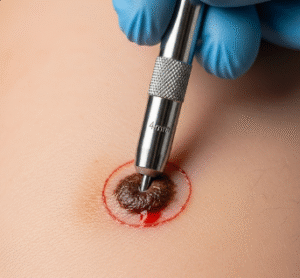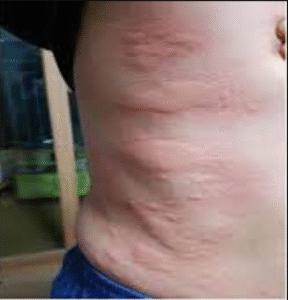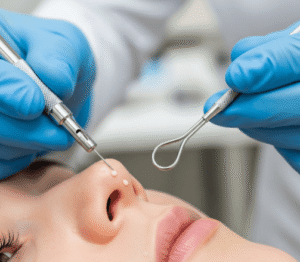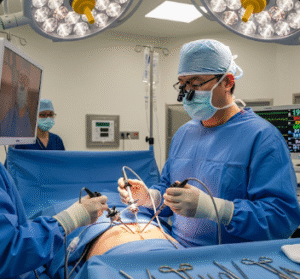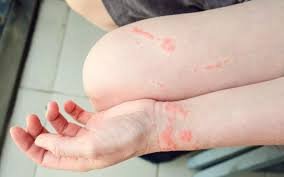Overview
Tetanus, commonly known as “lockjaw,” is a serious bacterial infection caused by Clostridium tetani. This bacterium produces a potent neurotoxin that affects the nervous system, leading to muscle stiffness and spasms. Although preventable through vaccination, tetanus remains a critical health concern worldwide. In South Korea, national immunization programs and advanced medical care have made tetanus relatively rare, but immediate treatment is essential for cases resulting from contaminated wounds. Korean hospitals provide comprehensive care, including wound management, immunotherapy, intensive care support, and rehabilitation, to reduce morbidity and mortality associated with this condition.
What is Tetanus?
Tetanus is an acute infection characterized by the release of tetanospasmin, a neurotoxin produced by Clostridium tetani. The toxin interferes with nerve signals controlling muscle contraction, leading to sustained and painful muscle spasms. Tetanus does not spread from person to person; instead, it occurs when spores from contaminated soil, dust, or animal feces enter the body through wounds, burns, or surgical incisions. In Korea, prompt recognition and hospitalization are critical to prevent complications, as the disease can rapidly progress to respiratory failure or systemic involvement.
Symptoms
Symptoms of tetanus typically appear 3 to 21 days after exposure, depending on the severity of the wound and the amount of toxin produced. Key signs include:
- Stiffness of the jaw muscles, known as lockjaw
- Muscle spasms in the neck, back, and abdomen
- Difficulty swallowing or speaking
- Fever and sweating
- Rapid heart rate and high blood pressure
- Painful spasms triggered by minor stimuli such as light, sound, or touch
- Severe cases may involve generalized convulsions and respiratory distress
Early identification of these symptoms is crucial for initiating intensive care in South Korean medical facilities.
Causes
Tetanus is caused by infection with Clostridium tetani spores, which are commonly found in soil, dust, and animal feces. The bacteria enter the body through:
- Puncture wounds from nails, splinters, or needles
- Burns or deep cuts, particularly in contaminated environments
- Surgical or injection-related wounds if sterile procedures are not followed
- Animal bites or scratches
- In some cases, minor injuries that go unnoticed
Once inside the body, the bacteria produce tetanospasmin, which blocks inhibitory nerve signals, causing uncontrolled muscle contraction.
Risk Factors
Certain factors increase the risk of developing tetanus:
- Lack of vaccination or incomplete immunization
- Deep or contaminated wounds, especially puncture wounds
- Chronic wounds or injuries in individuals with compromised immunity
- Age over 60 years, as immunity may wane over time
- Intravenous drug use or poor wound hygiene
- Burns, crush injuries, or surgical wounds in non-sterile environments
In South Korea, national vaccination programs and public health initiatives have significantly reduced risk, but awareness and booster vaccinations remain essential.
Complications
If left untreated, tetanus can lead to severe and life-threatening complications:
- Respiratory failure due to spasms of respiratory muscles
- Severe muscle rigidity and fractures from intense spasms
- Autonomic dysfunction causing abnormal heart rate and blood pressure
- Secondary infections due to prolonged hospitalization
- Aspiration pneumonia from difficulty swallowing
- Permanent neurological damage or death
Korean hospitals provide intensive monitoring and multidisciplinary care to prevent these complications.
Prevention
Tetanus is largely preventable through vaccination and proper wound care:
- Vaccination: Primary series of tetanus vaccines in infancy, with booster doses every 10 years
- Wound hygiene: Cleaning and disinfecting all cuts, punctures, or burns immediately
- Post-exposure prophylaxis: Administration of tetanus immunoglobulin for high-risk wounds in unvaccinated individuals
- Education: Public awareness campaigns on the importance of vaccination and proper wound care
- Occupational precautions: Using gloves, protective clothing, and safety equipment when handling soil, metal, or contaminated materials
South Korea’s national immunization program ensures high coverage rates, significantly reducing the incidence of tetanus.
Treatment Options in Korea
Treatment for tetanus in South Korea involves immediate medical care, supportive therapy, and intensive monitoring:
Diagnosis:
- Clinical evaluation based on history of wound exposure and characteristic symptoms
- Laboratory tests may support the diagnosis, though they are not definitive
- Assessment of vaccination history and immune status
Medical Treatments:
- Tetanus immunoglobulin (TIG): Neutralizes circulating toxin
- Antibiotics: Such as metronidazole or penicillin to eliminate bacterial infection
- Muscle relaxants: To control spasms, including benzodiazepines or dantrolene
- Sedation and analgesics: To relieve pain and anxiety associated with spasms
Supportive Care:
- Intensive care unit monitoring for respiratory support and cardiovascular stability
- Mechanical ventilation in severe cases to manage respiratory compromise
- Nutritional support and hydration through IV therapy
- Wound debridement to remove necrotic tissue and reduce bacterial load
Rehabilitation:
- Physical therapy to restore muscle function and mobility after recovery
- Long-term follow-up to monitor neurological recovery and overall health
South Korean hospitals integrate infectious disease specialists, critical care teams, and rehabilitation experts to provide comprehensive management for tetanus, ensuring the highest chance of recovery and minimizing long-term complications.


